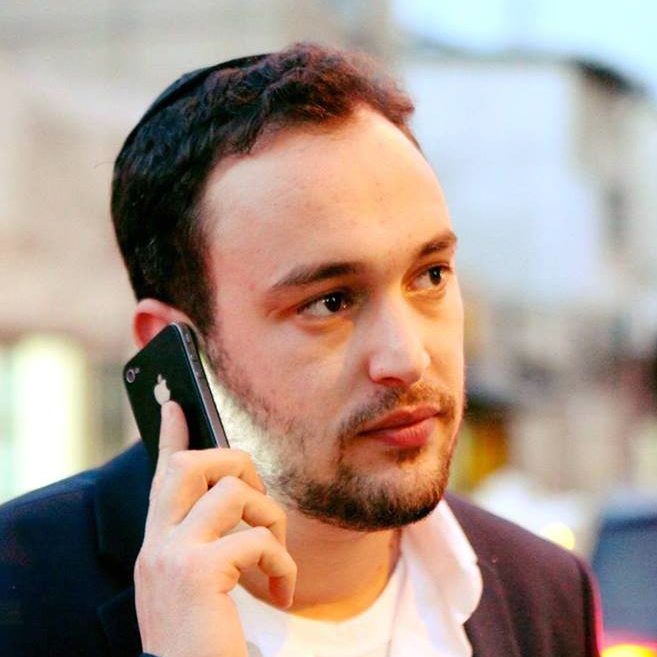Back Where I Belong

How the Belzer Rebbe pulled Dudi Kalish back from the brink

Photos: Yaakov Lederman
I figured he’d share some nostalgic musings from his childhood, talk about the albums and productions he’s proudest of, dispense some advice for budding musicians, and, as a 20-year veteran of the studio, share his perspective on today’s musical world. Instead, what I thought would be the life story of Dudi Kalish was more like a long cheshbon hanefesh, a confessional from the depths of his soul, from the pain and confusion of his spiritual lows to his return to the authentic world of Torah and chassidus.
Our conversation was punctuated by a lot of emotion, not a little pain, and even some unchecked tears. Because Dudi Kalish has been there and back. He was respected, admired, and he even still looked chassidish, as he wandered into those margins at the edge of propriety — alienated from the court of Belz in which he grew up and distanced from his own family as he began to tread into the world of secular American entertainment.
When he first returned to the Belz beis medrash, under the strong, loving influence of the Belzer Rebbe himself — the leader who never gave up on him — many eyebrows were raised. But he survived the stares and the whispers, and learned some powerful and humbling lessons about the blessings and pitfalls of talent.
The Dream
The Kalish living room in Bnei Brak is unquestionably a chassidish home: There’s an ornate bookcase packed with seforim, brocade curtains that extend over an entire wall, and a gigantic portrait of the Belzer Rebbe. The piano nearby, though, indicates that something else is happening here as well.
Dudi Kalish, 41, was born in Bnei Brak, where his father still lives. Today their connection is stronger than ever, and not only because of the physical proximity of their apartments. Reb Avraham Yaakov Kalish, 90, a Holocaust survivor who raised a large family in Eretz Yisrael, gets a daily visit from his son, who has also become his regular chavrusa since his return to Belz.
Reb Avraham Yaakov and his brother, born in Transylvania to a long-established Belzer family, were the only surviving members of their family. After the war, he became one of the central figures involved in the revival of the Belzer court.
Dudi, the youngest of ten brothers and sisters, says the Holocaust always hovered over the family consciousness. “We lived it every day,” says Kalish. “My father didn’t speak about it too much, but the little he said only intensified our horror of what he’d endured. I’m a classic ‘second-generation’ survivor.”
Dudi Kalish wasn’t one of those wunderkind child prodigies. He had a straight Belzer education, from the Talmud Torah in Bnei Brak to yeshivah ketanah and yeshivah gedolah in Jerusalem. Still, he was always connected to music — his brother is composer Reb Shlomo Kalish — and couldn’t hide his talent.
“I was 17 when the story really began,” he remembers. “That’s when I was approached by Rav Yosef Tzvi Breyer, rosh yeshivah of the Belzer yeshivah in Beit Chilkiyah, who was pretty much in charge of the Belz music industry. He was recording an album of his compositions and asked me to organize a choir to perform them.”
Rabbi Breyer, the venerated composer of the Belzer court, has hundreds of songs to his credit, some of which have become classics — and not only in Belz. One of his most famous is the Birkas Hamazon niggun, born thanks to a mandate from the Belzer Rebbe himself to create a new bentshing tune that would capture children’s hearts.
“When Rav Breyer turned to me, I realized that I was being granted the opportunity to fulfill a dream — the professional music world was always my ambition, but it was really more like a fantasy,” Dudi says. “I didn’t believe it would really happen. I was thrilled to be able to organize the choirs for his album. My salary was a serving of cholent and schnitzel from the Shtisel restaurant, which Rav Breyer would bring to me in yeshivah. It sounds pretty silly now, but back then, it was a great deal.”
As he began rehearsing with the choirs, it became clear that Kalish himself was gifted with extraordinary talent. “Back then, to be successful, you really had to understand music — things were a lot more unforgiving in the studio. There was no such thing as computer-generated music or the sophisticated mixing that goes into an album today. You had to get it right, because they couldn’t just click and cut and paste to adjust any mistakes. I had actually learned sheet music from an old Jew, a Holocaust survivor who lived near the Belzer yeshivah on Agripas Street. He had a huge store of classical music that fascinated me. I would sit in his house for hours going over those musical scores. I taught myself to read sheet music and then began writing my own compositions.”
Oops! We could not locate your form.












